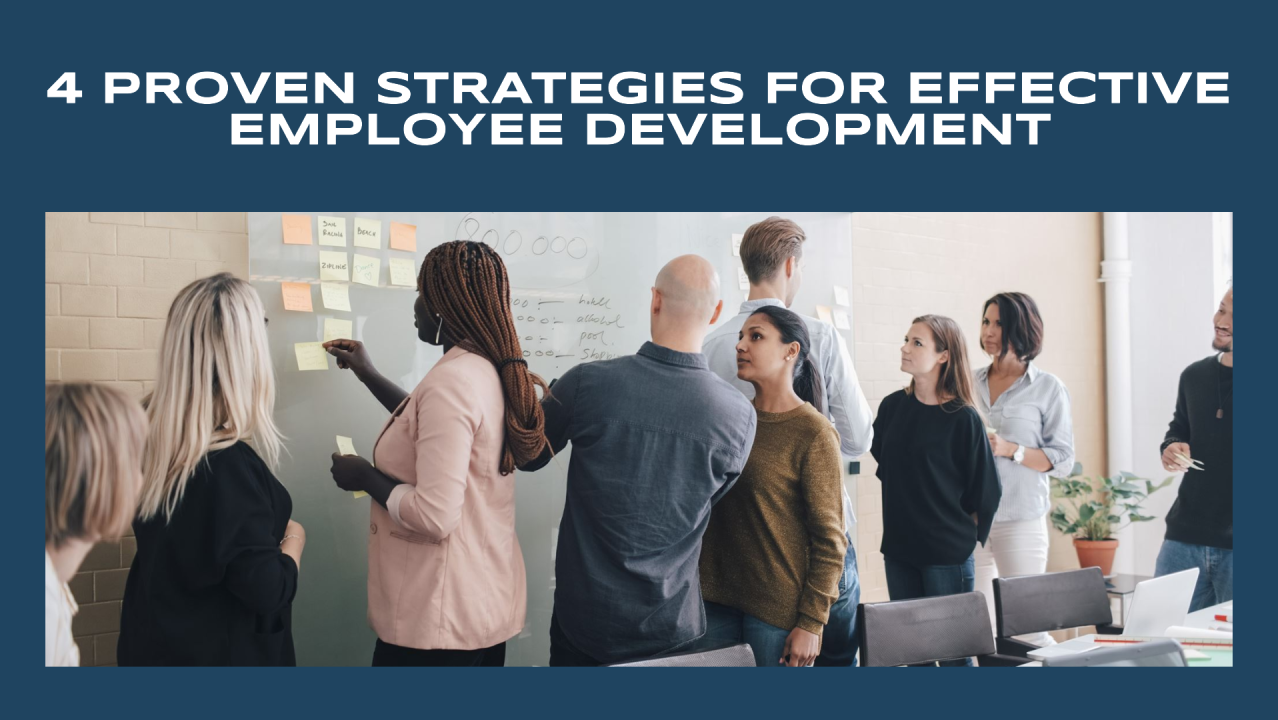
4 Proven Strategies for Effective Employee Development
TalentSmartEQ
TalentSmartEQ is the world’s premier provider of emotional intelligence (EQ) assessments, training, and consulting.
In today’s competitive landscape, investing in employee development is not merely a nice perk; it’s a strategic imperative for enhancing well-being, communication, collaboration, relationships, and performance. While this sounds like a lot to tackle, we can do so by turning to Team Emotional Intelligence (EQ).
Team EQ addresses the two factors most impactful upon a team’s performance: emotions and relationships. Being aware of and effectively managing your team’s emotions are critical skills for building productive internal and external relationships. By integrating Team EQ principles and strategies into employee development programs, you can transform your team and your organization. Let’s take a look at how.
Empower Your Teams, Empower Your People
1. Cultivate Emotion Awareness
Just under the surface of every meeting, email chain, or conference call are emotions. Feelings about the work and about one another influence your team’s conversations, decisions, and relationships. By getting to know the team’s moods and emotional habits, you can better understand how the team operates at a deeper level. Emotion awareness is a core Team EQ skill that helps us more accurately observe teammates and the team as a whole. Observe how teammates engage and respond across contexts – in normal and in stressful situations, certain and uncertain times, in cohesive and divided discussions, and so on. Getting in touch with your team’s emotions takes time. Take gradual steps forward and be patient. By noticing how your team feels and behaves, you’re helping to enhance awareness of each other, which builds trust and drives results.?
2. Manage the Team’s Emotions
This is not about stuffing feelings away or ignoring the mood of the room. Managing the emotions of your team is about responding effectively to the range of emotional situations your team experiences in both good times and not-so-good times. Use what you see and hear, including nonverbal body language, to intentionally decide what to say or do and what not to say or do. Keep simple statements in your back pocket to help manage the emotions on the team, such as: “Wait, let’s hear them out,” “Maybe we take a break,” or “What are alternative perspectives on this?” The key is that anyone on the team (not only the leader) can step up and make all the difference in moments that require emotion management.
3. Enhance Internal Relationships
Relationships are collections of many small interactions. The quality of these interactions gradually impacts the quality of the team’s internal relationships, which in turn influences the quality of your work and results. A team’s internal bonds are not forged overnight. It takes time and investment in the team’s relationships. Focus on each interaction. Be open and curious to learn as much as you can about each member of your team. How do they respond to stress? What motivates them? What are their strengths? How can you best support them? Lastly, make sure to also share these items about yourself to help your team help you.??
领英推荐
4. Strengthen External Relationships
Your performance is in large part measured by how well you meet the needs of the organization, and the same is true of your team. Teams that seek out and develop strong external relationships can grow their understanding of the bigger picture, know how their work fits into the larger organization, and elicit external support for more strategic impact. Organizations depend on effective cross-functional collaboration. No matter how talented the team is, if it fails to develop and maintain strong relationships externally, it will fall short of achieving what’s needed.
Bringing It All Together
Think about it like this: most of the work we do is in teams and most of the challenges of our work surface by virtue of our emotions and relationships. Impactful and sustainable employee development initiatives must address and strengthen team dynamics, otherwise they don’t truly meet the needs of today’s increasingly integrated workforce – not the least of which include individuals’ needs for connection, inclusion, and empowerment. By embedding Team EQ concepts and strategies into employee development, organizations can build a more supportive and high-performing workforce.
By Josh Rosenthal, Director of Training for TalentSmartEQ .
These strategies were adapted from the book, Emotional Intelligence Habits by Dr. Travis Bradberry cofounder of TalentSmartEQ and the award-winning coauthor of Emotional Intelligence 2.0 .
For more strategies that can help you improve engagement at your organization, contact us .